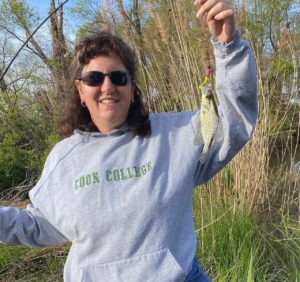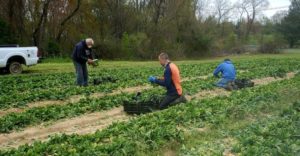This is a stressful time for many people in our country and especially on the farm. With constant updates from government officials and media sharing new about the pandemic and the fear of the unknown for the future, it is understandable to feel overwhelmed, stressed and anxious. Seeing other farmers around the nation struggling with crop losses and distribution nightmares makes other farmers wonder what is yet to come. You are not alone and there are resources to help if you are struggling with stress and anxiety.
For assistance contact the Substance Abuse and Mental Health Services Administration’s (SAMHSA) Disaster Distress Helpline at 800-985-5990, the National Suicide Prevention Lifeline at 800-273-8255 or text MHFA to 741741 to talk to a Crisis Text Line counselor.
Farmers often feel they may be mentally and physically tougher than most people. That may be true. However, it is understandable if you are feeling depressed or anxious right now, just like the millions of people across the country who are facing the same worries and challenges. It’s perfectly understandable since most people have never experienced times like we are facing now. It’s extremely important to take care of your mental health. Helping yourself means you will be able to help others in the future.
While times may not change as quickly as we would like, there are easy self-care strategies that can help reduce feelings of depression and anxiety, or prevent anxiety before it even starts.
Here are some tips that may help:
1. Eat healthy foods to keep your body in top working order and avoid foods/beverages that cause issues with underlying health conditions.
2. Exercise reduces symptoms of depression and anxiety. Exercise is not the same as regular activity at work. Take a brisk walk or jog down a farm road, ride a bike, lift weights (even if you need to make your own out of what you have around the farm and start light).
3. Practice relaxation therapy. Focusing on tensing and relaxing muscle groups can help you relax voluntarily when feeling overwhelmed, stressed or anxious. Concentrate on the shoulder and neck regions of the body, where stress often builds.
4. Be kind to yourself. Treat yourself with the same compassion you would a friend and allow others to help as you would help them.
5. Stay connected. Even if you can’t get together face-to-face, you can stay connected to friends, family and neighbors with phone calls, text messages, video chats and social media. If you’re feeling lonely, sad or anxious, reach out to your social support networks – all is kept confidential. Share what you are feeling and offer to listen to friends or family members about their feelings. We are all experiencing this scary and unc ertain time together.
ertain time together.
6. Monitor media consumption. While you might want to stay up-to the minute with COVID-19 news, too much exposure can be overwhelming. Balance media consumption with other activities you enjoy, such as playing with pets, reading, cooking, fishing at the farm pond, playing games with family or listening to music.
Adding small changes to your routine each day can make a big difference to your overall mood and well-being. Just remember, if you need help, help is available.

